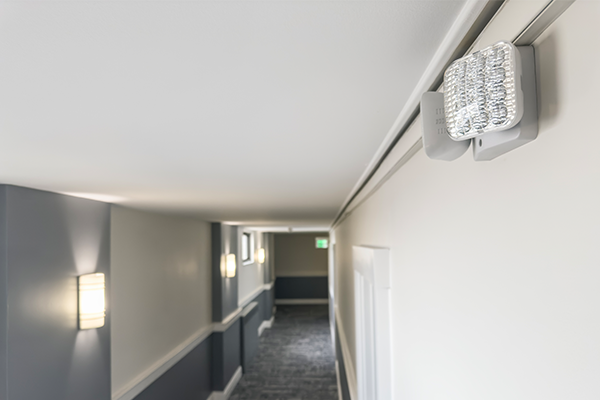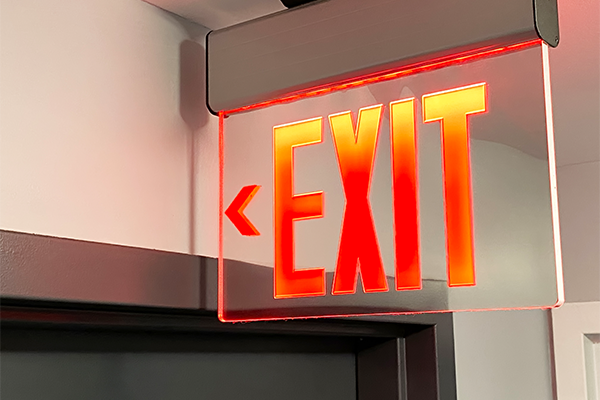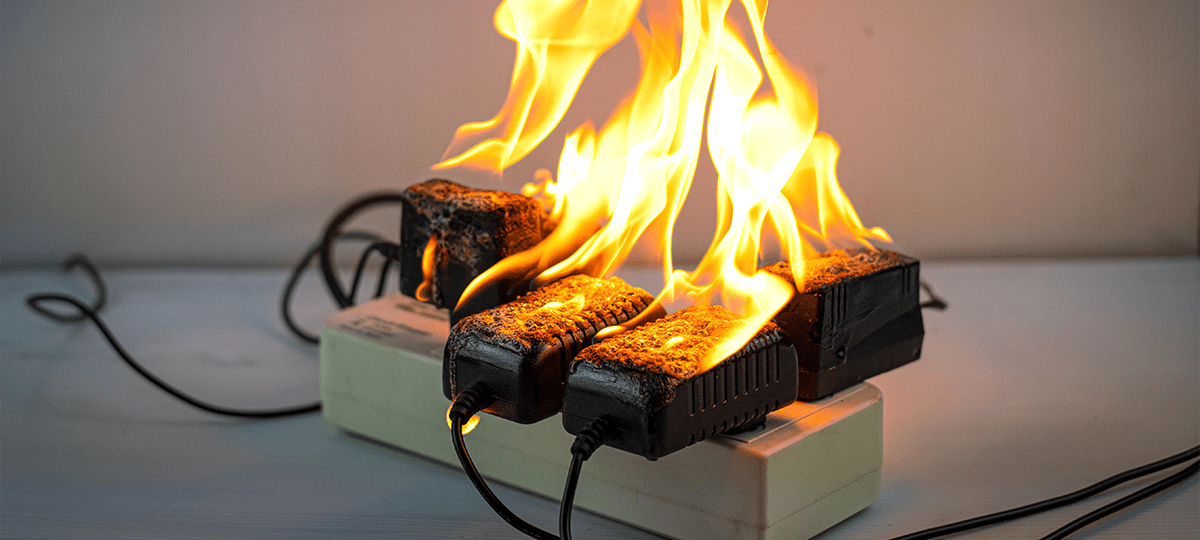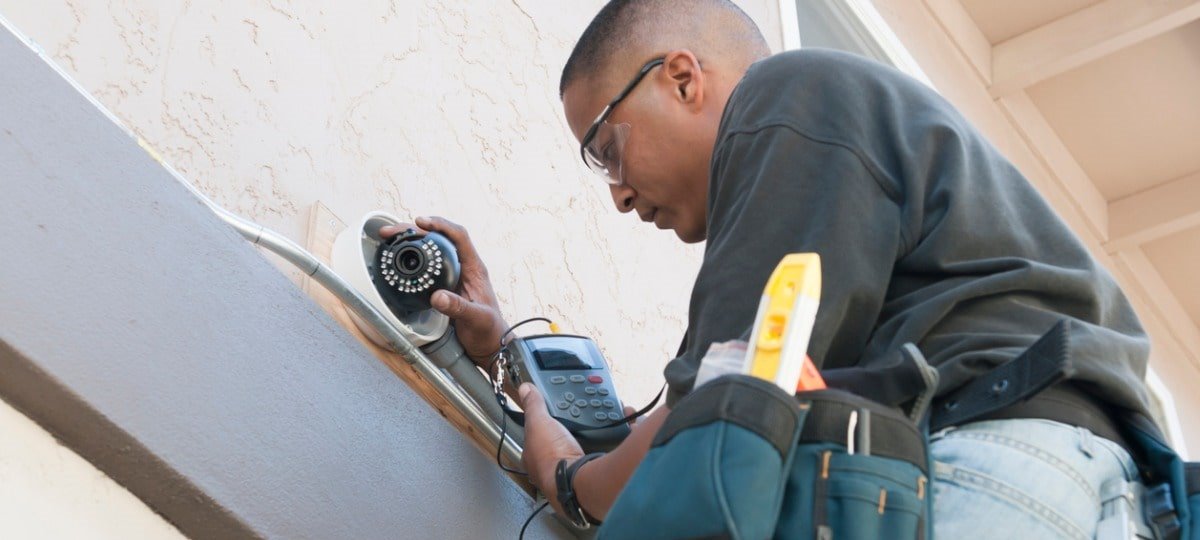Why Emergency and Exit Lighting Matter
Emergency lighting and exit lighting are vital components of life safety systems. They’re a standard part of any commercial structure and not as noticeable on a normal day. When power fails or a disaster happens, these lights guide people to safety, helping prevent panic and ensuring clear evacuation routes for everyone in a building.
Whether you’re a facilities manager or business owner, understanding how these systems work and what standards apply can make all the difference. Read on to explore how emergency and exit lighting systems operate, what codes determine their use, and how FSS Technologies can support your safety goals.
What are the key components of emergency and exit lighting?
Emergency and exit lighting systems consist of several important parts that work together during a crisis:
1. Exit signs and light fixtures
Exit signs, which are commonly equipped with internally lit letters, clearly mark exits and pathways of egress. Emergency lights provide temporary light sources when the main power is lost, giving a structure’s occupants enough time to safely evacuate the building.
2. Primary and backup power sources
Emergency lighting can be connected to a main power source, but it needs another option if power is lost. Battery backup units contain sealed batteries that charge under normal conditions and instantly switch on during a blackout. Generator-powered systems offer extended runtime and are typical in larger structures.
3. Control and monitoring panels
Modern systems integrate monitoring panels that display power status, test results, and fault conditions within an emergency lighting system. Equipping a building with a control and monitoring panel makes it easier to maintain the devices and ensure documents are ready for inspections.
What regulations apply to emergency lighting?
Emergency and exit lighting systems must comply with several important codes and standards. The primary set of requirements comes from the National Fire Protection Association, which sets fire safety standards across the country. NFPA 101 Life Safety Code outlines emergency lighting requirements and is one of many NFPA codes every business should know.
Per NFPA 101, emergency lighting should be installed in areas like:
- Stairwells
- Aisles
- Corridors
- Ramps
- Escalators
- Exit areas
Additional regulations that may apply can include:
- NFPA 70 National Electrical Code
- OSHA standards
- Local building codes
Together, these codes ensure systems are reliable, visible, and effective. By following these guidelines and others set by authorities having jurisdiction, businesses can protect themselves, their employees, and the customers they support.
What are the required tests and maintenance?
Like all life safety systems, emergency and exit lighting fixtures and devices must be tested regularly to remain reliable during a fire, disaster, or other emergency. According to the 2024 edition of NFPA 101, functional tests and visual inspections should be conducted each month for 30 seconds. Annually, emergency lighting systems should be tested for at least 90 minutes to ensure they work during power loss.
Common issues include depleted batteries, burnt-out lights, or wiring faults. Tracking test dates and outcomes is critical, both for safety assurance and audit compliance. If an inspection finds a faulty component, it should be replaced or repaired immediately. Failing to do so can lead to fines and other penalties.
Are LED systems worth the upgrade?
While older incandescent or fluorescent models have served well, newer LED-based emergency exit lighting systems offer significant benefits:
- Lower power use
- Reduced energy costs
- Longer lifespan
- Fewer replacements and repairs
- Reduced clutter with combined units
- Higher visibility
For many businesses, LED upgrades are an investment that can save money in the long run without violating NFPA standards and other codes.
Do emergency lighting systems integrate with others?
Like fire sprinkler systems or alarms, emergency lighting systems can benefit from integration with other life safety solutions. For example, a fire alarm system can connect to an emergency lighting system so that the lights are activated if a smoke detector or fire sprinkler is triggered. If a business has a building management system, integrations can allow facility managers to review all systems in a centralized monitoring position.
The FSS Technologies difference is as clear as day
At FSS Technologies, our comprehensive emergency and exit lighting services include:
- Design and installation of customized layouts of emergency lighting and exit signs that comply with NFPA codes
- Testing and inspection on a monthly and annual basis, each include complete records
- Upgrades and retrofitting for LEDs or combination exit and emergency lighting devices
- Ongoing support with life safety system monitoring, maintenance plans, and 24/7 emergency service
Emergency and exit lighting systems are more than code checkboxes—they’re lifelines during a crisis. Our expert team of NICET-certified service technicians ensures your systems are efficient and optimizes your building’s resources for compliance, safety, and long-term reliability.
Proper installation, timely maintenance, and modern upgrades ensure your building stays safe under pressure. If you’d like us to perform an inspection, support an LED upgrade, or implement an emergency exit lighting plan, we’re here to help. Contact us today to learn more.











